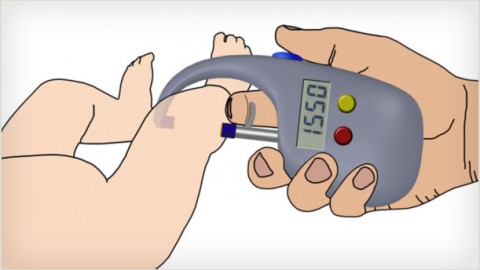On April 28, 2011, the Gates Foundation announced the Grand Challenges Explorations Round 6 winners. Eighty-nine researchers were awarded $100,000 grants for innovative,early-stage research projects focusing on one of five categories. Some of the winners are featured here.

David Moss from Lipoxen plc in the United Kingdom is developing an inexpensive, non-live polio vaccine that uses microscopic structures called liposomes that encapsulate and deliver poliovirus antigens directly to the immune system.

New Explorations grantee Erez Lieberman-Aiden and a team at Harvard University in the U.S. are developing a low-cost microbial fuel cell that recharges using free electrons found in soil bacteria. This dirt-powered battery could be used to power mobile phones at remote health care facilities.

John Wyatt of Power-free Education and Technology in the United Kingdom is developing a diagnostic system that uses a low-cost, durable finger probe attached to a “wind up” monitor to observe oxygen saturation levels in the blood of newborns, sick children and mothers undergoing cesarean section in low-resource settings.

Ekaterina Dadachova and Arturo Casadevall of the Albert Einstein College of Medicine in the U.S. are targeting HIV-infected cells with radioactivity-armed antibodies to test whether this strategy will aid in the complete destruction of these cells in HIV patients also on anti-retroviral therapy.

Hajime Mori of Kyoto Institute of Technology in Japan is developing a new oral polio vaccine that uses polio-like particles in protein chips which dissolve in the intestines to induce a strong immune response.

David Robbins of RTI International in the U.S. is testing the ability of cocopeat, a byproduct of coconut processing, for its ability to decompose human waste and produce grey water that can be for crop fertilization and irrigation.

Noune Sarvazyan and her team at Artann Laboratories in the U.S. are developing a hand-held ultrasonic device to measure water content in the soft tissue of newborns and diagnose dehydration, one of the leading causes of infant morbidity and mortality in the developing world.

Allen Wilcox of VillageReach in the U.S. is working with the University of Washington’s Computer Science & Engineering Department to test a mobile scanning application uses a cell phone to convert paper data into a digital medical record, improving access to vital health information for health care workers in rural settings.

Marco Sgarbanti at the Istituto Superiore di Sanità in Italy is developing a new class of small molecules that mimic natural compounds which stimulate HIV replication. These new molecules could activate the latent virus, exposing it to antiretroviral therapies that kill infected cells.

Andreas Koestler and Andrew Larsen of the Fontes Foundation in Norway are testing a new outhouse design with enlarged ventilation and waterproof walls, ceilings and waste containers made from old billboard fabric. By reducing odor and containing waste runoff, these outhouses can be erected in high-density difficult to serve communities such as refugee camps.

Maria Palasis of Arsenal Medical, Inc. in the U.S. is creating an inexpensive homeostatic foam device that can be placed into the uterus following childbirth to control postpartum bleeding, a major cause of maternal death in the developing world.

Ionita Ghiran of Beth Israel Deaconess Medical Center in the U.S. and collaborator Pierre Striehl of the Harvard School of Dental Medicine are creating a cell phone diagnostic device that uses magnetic levitation to detect iron-rich malaria-infected red blood cells. This malaria screening platform uses basic components, allowing for low-cost mass production.

Daniel Kavanagh of Massachusetts General Hospital in the U.S. will test a class of molecular probes for their ability to identify cells latently infected with HIV. If successful, these probes could be used to target and eliminate these HIV-infected cells.

Asafu Maradufu of the University of Eastern Africa, Baraton in Kenya is producing a gel-based disinfectant made from the local plant Senecio lyratipartitus which can be applied to hands after anal washing to reduce the spread of disease.

Karen Wu of Lucerna, Inc. in the U.S. is developing an inexpensive portable device that can rapidly detect a biomarker of early sepsis. The easy-to-use tool will allow for timely treatment of neonatal sepsis, a major cause of infant mortality in developing countries.